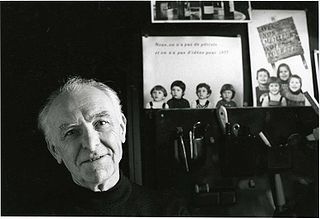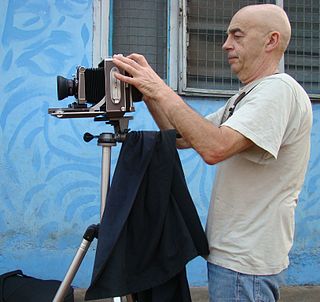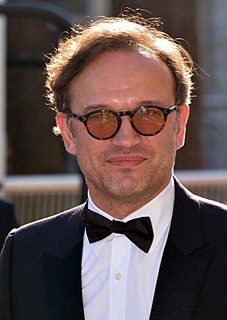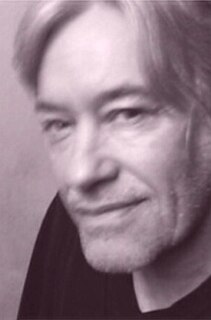Biography
In contact with Joseph Kessel, a French author and traveler, de Vallombreuse felt a very early desire to be a witness of his time. In 1984, he entered the École Nationale Supérieure des Arts Décoratifs in Paris with the idea of becoming a cartoonist. A trip to Borneo the next year, though, changed the course of his life. He shared his daily life with the Punans, the last nomads of the jungle. Normally a sedentary artist, de Vallombreuse decided to become a nomadic witness, and photography became his mode of expression. While still a student at the Arts Décoratifs in Paris, he took multiple trips to the Philippine jungle to stay with the Palawan people. In total, he lived with them for over two years. The first part of his work on this tribe was presented at the photographic festival Les Rencontres internationales de la photographie in Arles.
De Vallombreuse was Secretary General of the Association of Anthropology and Photography (association Anthropologie et Photographie, Paris Diderot University). Since then, he has regularly collaborated with leading international magazines: GEO (France, Russia, Germany, Spain, South Korea, Japan), Sciences et Avenir, Le Monde 2, Le Figaro Magazine, Newsweek, El Mundo, El País , and La Stampa .
The Origins of Man (Hommes Racines)
Encompassing five years of work, this project represents the commitment of a photographer with eleven indigenous peoples spread across the globe. Its main purpose is to show the intimate relationship between man and his environment. De Vallombreuse presented his work as a testament to the diversity of lifestyles, practices, and traditional knowledge that are embedded in very different environments. These cultures are repositories of knowledge essential to the preservation of biodiversity. De Vallombreuse aimed to promote a reflection on humanity sustainable whose corollary is the protection of nature.
Whenever linked to a specific people, the project emphasizes the multiplicity of responses to living conditions imposed by nature and history. It is in this context that de Vallombreuse addresses this root concept. By meeting people entrenched in their territory and those who have been subjected to the test of uprooting, de Vallombreuse analyzed changes in life affecting our modernity. He worked to show how indigenous peoples are often the first victims of environmental disasters: food shortages, deforestation, global warming, pollution, and water war, crucial questions that, far from being local concerns, affect our mutual humanity.
Since 2007, this project has resulted in 12 exhibitions and numerous publications.

The Lumière brothers, Auguste Marie Louis Nicolas Lumière and Louis Jean Lumière, were manufacturers of photography equipment, best known for their Cinématographe motion picture system and the short films they produced between 1895 and 1905. Their screening of a single film on 22 March 1895 for around 200 members of the "Society for the Development of the National Industry" in Paris was probably the first presentation of projected film. Their first commercial public screening on 28 December 1895 for around 40 paying visitors and invited relations has traditionally been regarded as the birth of cinema, although it had in fact been preceded by paying shows to thousands of people in the USA and Germany.

Sebastião Ribeiro Salgado Júnior is a Brazilian social documentary photographer and photojournalist.

Robert Doisneau was a French photographer. In the 1930s, he made photographs on the streets of Paris. He was a champion of humanist photography and with Henri Cartier-Bresson a pioneer of photojournalism.

Abbas Attar, better known by his mononym Abbas, was an Iranian photographer known for his photojournalism in Biafra, Vietnam and South Africa in the 1970s, and for his extensive essays on religions in later years. He was a member of Sipa Press from 1971 to 1973, a member of Gamma from 1974 to 1980, and joined Magnum Photos in 1981.

William Klein is an American-born French photographer and filmmaker noted for his ironic approach to both media and his extensive use of unusual photographic techniques in the context of photojournalism and fashion photography. He was ranked 25th on Professional Photographer's list of 100 most influential photographers.

René Burri was a Swiss photographer. Burri was a member of Magnum Photos and photographed major political, historical and cultural events and key figures of the second half of the 20th century. He made portraits of Che Guevara and Pablo Picasso as well as iconic pictures of São Paulo and Brasília.

Guy Hersant is a French photographer.

Vincent Perez is a Swiss actor, director and photographer. He is best known internationally for playing the title character, Ashe Corven, in The Crow: City of Angels, and for starring in Queen of the Damned, playing Marius de Romanus. Some of his notable films in French cinema include Cyrano de Bergerac, Le Bossu, La Reine Margot and Indochine.
Laure Albin Guillot was a French photographer. In addition to portraits of Paris celebrities, she covered a wide variety of genres and had a number of high-ranking positions.
Stefano De Luigi is an Italian photographer. De Luigi has been a member of VII Photo Agency since 2008 and lives in Paris.
Diana Lui is a Franco-Belgian artist, photographer and filmmaker of Chinese origin. Diana Lui is best known for her large format photographic portraits of today's growing hybrid generation of multicultural and multiethnic individuals.

Philippe Robert is a French photographer. His work includes portraits, fashion, and advertising photos.

Robert Delpire was an art publisher, editor, curator, film producer and graphic designer who lived and worked in Paris. He predominantly concerned himself with documentary photography, influenced by his interest in anthropology.
Humanist Photography, also known as the School of Humanist Photography, manifests the Enlightenment philosophical system in social documentary practice based on a perception of social change. It emerged in the mid-twentieth-century and is associated most strongly with Europe, particularly France, where the upheavals of the two world wars originated, though it was a worldwide movement. It can be distinguished from photojournalism, with which it forms a sub-class of reportage, as it is concerned more broadly with everyday human experience, to witness mannerisms and customs, than with newsworthy events, though practitioners are conscious of conveying particular conditions and social trends, often, but not exclusively, concentrating on the underclasses or those disadvantaged by conflict, economic hardship or prejudice. Humanist photography "affirms the idea of a universal underlying human nature". Jean Claude Gautrand describes humanist photography as:
a lyrical trend, warm, fervent, and responsive to the sufferings of humanity [which] began to assert itself during the 1950s in Europe, particularly in France ... photographers dreamed of a world of mutual succour and compassion, encapsulated ideally in a solicitous vision.

Brodbeck & de Barbuat form a couple of visual artists working with photography, video and installation.
François Tuefferd was a French photographer, active from the 1930s to the 1950s. He also ran a darkroom and gallery in Paris, Le Chasseur d'Images, where he printed and exhibited the works of his contemporaries. His best-known imagery features the French circus.
Kim Timby is a photography historian based in Paris who teaches at the École du Louvre and works as a curator for a private collection specialising in international nineteenth-century photography. From her research and teaching, Timby writes on the cultural history of photography as a technology.

Sabine Weiss is a Swiss-French photographer and one of the most prominent representatives of the French humanist photography movement, along with Robert Doisneau, Willy Ronis, Édouard Boubat and Izis. She was born in Saint-Gingolph, Switzerland, and became a naturalised French citizen in 1995.
This article contains significant photo events in 2018.
La Recherche photographique: histoire-esthétique was a specialised peer-reviewed bi-annual French journal, published from September 1986 to spring 1997, and edited by Paris Audiovisuel and the University of Paris 8.
This page is based on this
Wikipedia article Text is available under the
CC BY-SA 4.0 license; additional terms may apply.
Images, videos and audio are available under their respective licenses.












